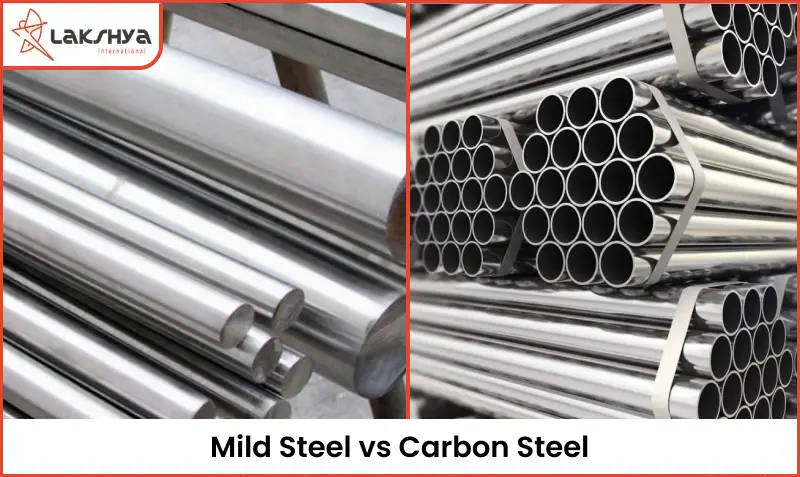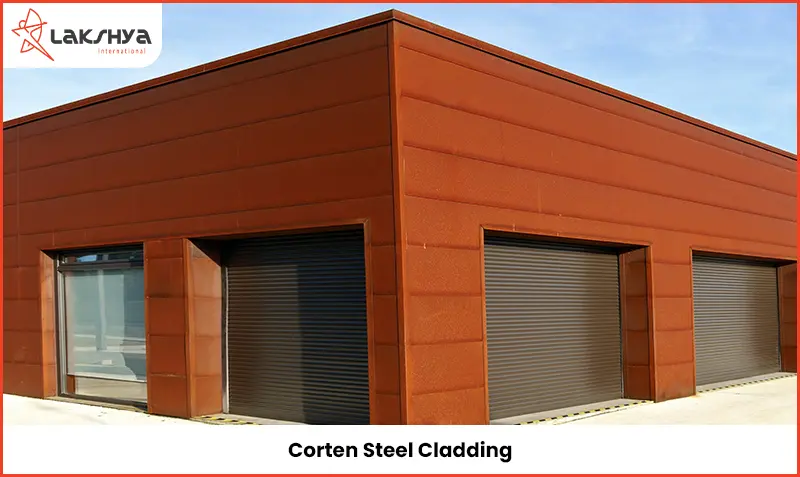Table of content
The 3 elements of steel pipe dimension
Steel Pipe Dimensions Chart (Size Chart)
|
Nominal Pipe Size |
Outside Diameter (mm) |
Nominal Wall Thickness Schedule |
|||||||||||||||||
|
NPS |
DN |
OD |
SCH 5s |
SCH l0s |
SCH 10 | SCH 20 | SCH 30 |
SCH 40s |
SCH STD | SCH 40 | SCH 60 |
SCH 80s |
SCH XS | SCH 80 | SCH 100 | SCH 120 | SCH 140 | SCH 160 | SCH XXS |
| 1/8 | 6 | 10.3 | 1.24 | 1.73 | 1.73 | 1.73 | 2.41 | 2.41 | 2.41 | ||||||||||
| 1/4 | 8 | 13.7 | 1.65 | 2.24 | 2.24 | 2.24 | 3.02 | 3.02 | 3.02 | ||||||||||
| 3/8 | 10 | 17.1 | 1.65 | 2.31 | 2,31 | 2.31 | 3.20 | 3.20 | 3.20 | ||||||||||
| 1/2 | 15 | 21.3 | 1.65 | 2.11 | 2.77 | 2.77 | 2.77 | 3.73 | 3.73 | 3.73 | 4.78 | 7.47 | |||||||
| 3/4 | 20 | 26.7 | 1.65 | 2.11 | 2.87 | 2.87 | 2.87 | 3.91 | 3.91 | 3.91 | 5.56 | 7.82 | |||||||
| 1 | 25 | 33.4 | 1.65 | 2.77 | 3.38 | 3.38 | 3.38 | 4.55 | 4.55 | 4.55 | 6.35 | 9.09 | |||||||
| 1 1/4 | 32 | 42.2 | 1.65 | 2.77 | 3.56 | 3.56 | 3,56 | 4.85 | 4.85 | 4.85 | 6.35 | 9.70 | |||||||
| 1 1/2 | 40 | 48.3 | 1.65 | 2.77 | 3.68 | 3.68 | 3.68 | 5.08 | 5.08 | 5.08 | 7.14 | 10.15 | |||||||
| 2 | 50 | 60.3 | 1.65 | 2.77 | 3.91 | 3.91 | 3.91 | 5.54 | 5.54 | 5.54 | 8.74 | 11.07 | |||||||
| 2 1/2 | 65 | 73 | 2.11 | 3.05 | 5.16 | 5.16 | 5.16 | 7.01 | 7.01 | 7.01 | 9.53 | 14.02 | |||||||
| 3 | 80 | 88.9 | 2.11 | 3.05 | 5.49 | 5.49 | 5.49 | 7.62 | 7.62 | 7.62 | 11.13 | 15.24 | |||||||
| 3 1/2 | 90 | 101.6 | 2.11 | 3.05 | 5.74 | 5.74 | 5.74 | 8.08 | 8.08 | 8.08 | |||||||||
| 4 | 100 | 114.3 | 2.11 | 3.05 | 6.02 | 6.02 | 6.02 | 8.56 | 8.56 | 8.56 | 11.13 | 13.49 | 17.12 | ||||||
| 5 | 125 | 141.3 | 2.77 | 3.40 | 6.55 | 6.55 | 6.55 | 9.53 | 9,53 | 9.53 | 12.70 | 15.88 | 19.05 | ||||||
| 6 | 150 | 168.3 | 2.77 | 3.40 | 7.11 | 7.11 | 7.11 | 10.97 | 10.97 | 10.97 | 14.27 | 18.26 | 21.95 | ||||||
| 8 | 200 | 219.1 | 2.77 | 3.76 | 6.35 | 7.04 | 8.18 | 8.18 | 8.18 | 10.31 | 12.70 | 12.70 | 12.70 | 15.09 | 18.26 | 20.62 | 23.01 | 22.23 | |
| 10 | 250 | 273.1 | 3.40 | 4.19 | 6.35 | 7.80 | 9.27 | 9.27 | 9.27 | 12.70 | 12.70 | 12.70 | 15.09 | 18.26 | 21.44 | 25.40 | 28.58 | 25.40 | |
| 12 | 300 | 323.9 | 3.96 | 4.57 | 6.35 | 8.38 | 9.53 | 9.53 | 10.31 | 14.27 | 12.70 | 12.70 | 17.48 | 21.44 | 25.40 | 28.58 | 33.32 | 25.40 | |
| 14 | 350 | 355.6 | 3.96 | 4.78 | 6.35 | 7.92 | 9.53 | 9.53 | 11.13 | 15.09 | 12.70 | 19.05 | 23.83 | 27.79 | 31.75 | 35.71 | |||
| 16 | 400 | 406.4 | 4.19 | 4.78 | 6.35 | 7.92 | 9.53 | 9.53 | 12.70 | i6.66 | 12.70 | 21.44 | 26.19 | 30.96 | 36.53 | 40.49 | |||
| 18 | 450 | 457.2 | 4.19 | 4.78 | 6.35 | 7.92 | 11.13 | 9.53 | 14.27 | 19.05 | 12.70 | 23.83 | 29.36 | 34.93 | 39,67 | 45.24 | |||
| 20 | 500 | 508 | 4.78 | 5.54 | 6.35 | 9.53 | 12.70 | 9.53 | 15.09 | 20.62 | 12.70 | 26.19 | 32.54 | 38.10 | 44.45 | 50.01 | |||
| 22 | 559 | 4.78 | 5.54 | 6.35 | 9.53 | 12.70 | 9.53 | 22.23 | 12.70 | 28.58 | 34.93 | 41.28 | 47.63 | 53.98 | |||||
| 24 | 600 | 610 | 5.54 | 6.35 | 6.35 | 9.53 | 14.27 | 9.53 | 17.48 | 24.61 | 12.70 | 30.96 | 38.89 | 46.02 | 52.37 | 59.54 | |||
| 26 | 660 | 7.92 | 12.70 | 9.53 | 12.70 | ||||||||||||||
| 28 | 700 | 711 | 7.92 | 12.70 | 15.88 | 9.53 | 12.70 | ||||||||||||
| 30 | 762 | 6.35 | 7.92 | 7.92 | 12.70 | 15.88 | 9.53 | 12.70 | |||||||||||
| 32 | 800 | 813 | 7.92 | 12.70 | 15.88 | 9.53 | 17.48 | 12.70 | |||||||||||
| 34 | 884 | 7.92 | 12.70 | 15.88 | 9.53 | 17.48 | 12.70 | ||||||||||||
| 36 | 900 | 914 | 7.92 | 12.70 | 15.88 | 9.53 | 19.05 | 12.70 | |||||||||||
| 38 | 965 | 9.53 | 12.70 | ||||||||||||||||
| 40 | 1000 | 1016 | 9.53 | 12.70 | |||||||||||||||
| 42 | 1067 | 12.70 | 15.88 | 9.53 | 19.05 | 12.70 | |||||||||||||
| 44 | 1100 | 1118 | 9.53 | 12.70 | |||||||||||||||
| 46 | 1168 | 9.53 | 12.70 | ||||||||||||||||
| 48 | 1200 | 1219 | 9.53 | 12.70 | |||||||||||||||
| 52 | 1321 | ||||||||||||||||||
| 56 | 1422 | ||||||||||||||||||
| 60 | 1524 | ||||||||||||||||||
Dimension standards for steel pipe
Relevant standard specification ASME B 36.10M and B 36.19M
ASME B36.10M
This standard governs the uniformity of steel pipe dimensions and sizes, encompassing both seamless and welded types, suitable for diverse temperature and pressure conditions. The pipe is different from the tube. In this case, the pipe is used for oil and gas, water, and slurry pipelines. The standard used is ASME B 36.10M.
In this standard, if the pipe’s Outer Diameter is less than 12.75 in (NPS 12, DN 300), the actual diameter exceeds the Nominal Pipe Size (NPS) or DN (Nominal Diameter). For steel tube dimensions, the actual outside diameter matches the pipe number for all sizes.
Why do pipe sizes smaller than NPS 12 (DN 300) have different OD
Since there is no direct relationship between the old standard thickness (O.D.) and Nominal Size, both of them are accepted according to the ASME B 36.10 M standard.
Steel Pipe Schedule
ASME B36.19M
ASME B36.19M is for the stainless steel pipe dimensions, including seamless and welded types (same as the previous standard.)
This dimension standard is mostly the same as ASME B36.10M. Wherever the different part is:
- For NPS 14 to NPS 22 (DN 350-550), schedule 10S;
- NPS 12 of Schedule 40S
- NPS 10 and 12 of schedule 80S.
The pipe thickness mentioned above differs from B36.10M, hence the suffix “S” is used here.
Ways of express pipe dimensions
For Pipe wall thickness: Use Steel Pipe Schedule, like schedule 40 steel pipe, schedule 80 pipe.
For pipe Diameters: Nominal Pipe Size (NPS) and DN (Nominal Diameter)
Pipe weight Class (WGT), LB/FT (Pounds per foot), KG/M (Kg per meter)
What is Steel Pipe Dimensions Schedule?
ASME B 36.10 and many other standards use a method called “steel pipe schedule” to show how long a pipe is. This method is marked with “Sch.” Sch is the abbreviation of schedule, generally appearing in the American steel pipe standard, which is a prefix of a series number. For example, Sch 80, where “80” is a pipe number from chart/table ASME B 36.10.
Since steel pipes primarily transport fluids under pressure, their internal diameter is crucial, referred to as nominal bore (NB). So, if steel pipe carries the fluids with pressure, It’s vital for pipes to have sufficient strength and wall thickness. Wall thickness is denoted in Schedules (abbreviated as SCH) per the ASME standard, ensuring the pipe’s integrity.
The pipe schedule formula:
Sch.=P/[ó]t×1000
Where P is the Designed pressure, units in MPa and [ó]t is Allowable stress of materials under design temperature, Units in MPa.
What does SCH mean for the steel pipe dimensions?
We usually use the pipe schedule to describe the parameters of a steel pipe. This is a way to show the thickness of the pipe wall with a number. Sch. is not a wall thickness, but a series of wall thicknesses. Different pipe schedules mean that steel pipes with the same diameter but different wall thicknesses. Most of the time, SCH 5, 5S, 10, 10S, 20, 20S, 30, 40, 40S, 60, 80, 80S, 100, 120, 140, 160 are used to show a schedule. The table number shows how thick the pipe wall is. The higher the pressure resistance, the thicker the pipe wall.
Schedule 40, 80 steel pipe dimension means
As you’ve seen in the articles above, Schedule 40 or 80 refers to the thickness of the pipe wall. But why do buyers always look for it?
The reason is as follows:
Schedule 40 and 80 steel pipes are the most common sizes needed in different industries. Because of how much pressure they can handle, a lot of them are always needed.
Material standards for pipes this thick don’t have any limits. You could ask for sch 40 stainless steel pipe, like ASTM A312 Grade 316L, or sch 40 carbon steel pipe, like API 5L, ASTM A53, ASTM A106B, A 179, A252, A333, etc.
What is the Nominal Pipe Size (NPS)?
What is DN (Nominal Diameter)
DN (mm) and NPS (inch) conversion
1. Conversion DN ( mm ) that requires separate memory
| DN (mm) | 6 | 8 | 10 | 15 | 20 | 25 | 32 | 40 | 50 | 65 | 80 |
| NPS(inch) | 1/8 | 1/4 | 3/8 | 1/2 | 3/4 | 1 | 1 1/4 | 1 1/2 | 2 | 2 1/2 | 3 |
DN=25*NPS;
NPS=DN/25
3. Exact conversion
1 inch =25.4 mm
Pipe Weight Class Schedule
In the early days of pipe production, each size had a single standard specification, known as STD (standard tube). Thicker pipes, labeled XS, were introduced to handle high-pressure fluids, while XXS pipes were developed for even higher pressure. With advancements in material processing technology, demand grew for cost-effective thin-walled pipes, leading to the introduction of these pipe grades. The relationship between pipe schedules and weight classes is detailed in ASME B36.10 and ASME B36.19 specifications.
How to describe steel pipe dimensions and size correctly?
- Written as “pipe outside diameter wall thickness,” such as 88.9mm x 5.49mm (3 1/2″ x 0.216″). 114.3mm x 6.02mm (4 1/2″ x 0.237″), length 6m (20ft) or 12m (40ft), Single Random Length (SRL 18-25ft), or Double Random Length (DRL 38-40ft)
- Written as “NPS x Schedule”: NPS 3 inch x Sch 40, NPS 4 inch x Sch 40. The same size as what was said above.
- Written as “NPS x WGT Class,” “NPS 3” x “SCH STD,” or “NPS 4” x “SCH STD.” Same size as above.
- There is another way to describe pipe size. In North America and South America, people usually use “Pipe Outer Diameter x lb/ft.” As OD 3 1/2″, 16.8 lb/ft. A pound per foot is what lb/ft stands for.




